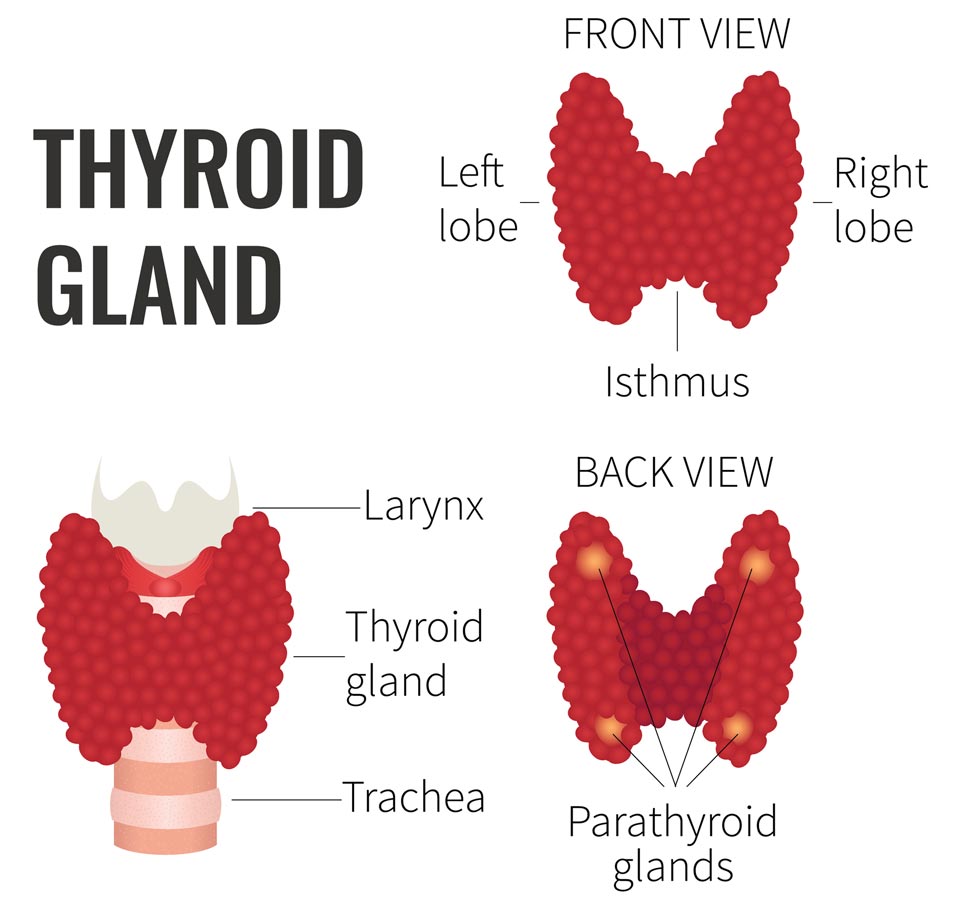Thyroid Conditions Can Cause Hair Loss

Androgens are not the only hormones that affect hair. Because thyroid hormones influence energy consumption and the production of proteins at the cellular level, they also play a role in hair and nail growth and health. Hair follicle cells also contain thyroid hormone receptors.(8, 29, 32)
Three types of thyroid conditions frequently cause hair loss:
- Hypothyroidism. A condition characterized by thyroid hormone deficiency, in the United States it is most often caused by an autoimmune disorder called Hashimoto’s disease. Iodine deficiency is the most frequent cause of hypothyroidism in developing countries.(2, 32)
- Hyperthyroidism. Corresponds to abnormally high levels of thyroid hormones, and is primarily caused by Graves disease — another autoimmune disorder.(32)
- Hypoparathyroidism. Most commonly occurs in elderly patients due to accidental removal during thyroid surgery.(32)
Texture of hair is also affected by thyroid conditions, with hair typically becoming dry and brittle. Alopecia totalis can occur in people with hypoparathyroidism.(29, 32, 173)
Gender and Thyroid Conditions
Both hypothyroidism and hyperthyroidism occur much more frequently in women. Hypothyroidism typically develops during midlife and hyperthyroidism mainly affects women over age 60.(32)
Thyroid-related hair loss can appear as diffuse telogen effluvium but studies suggest that female pattern hair loss (FPHL) is frequently found in patients with thyroid disease (particularly hypothyroidism) and often corresponds to longer duration of the disease.(29, 32, 173)

